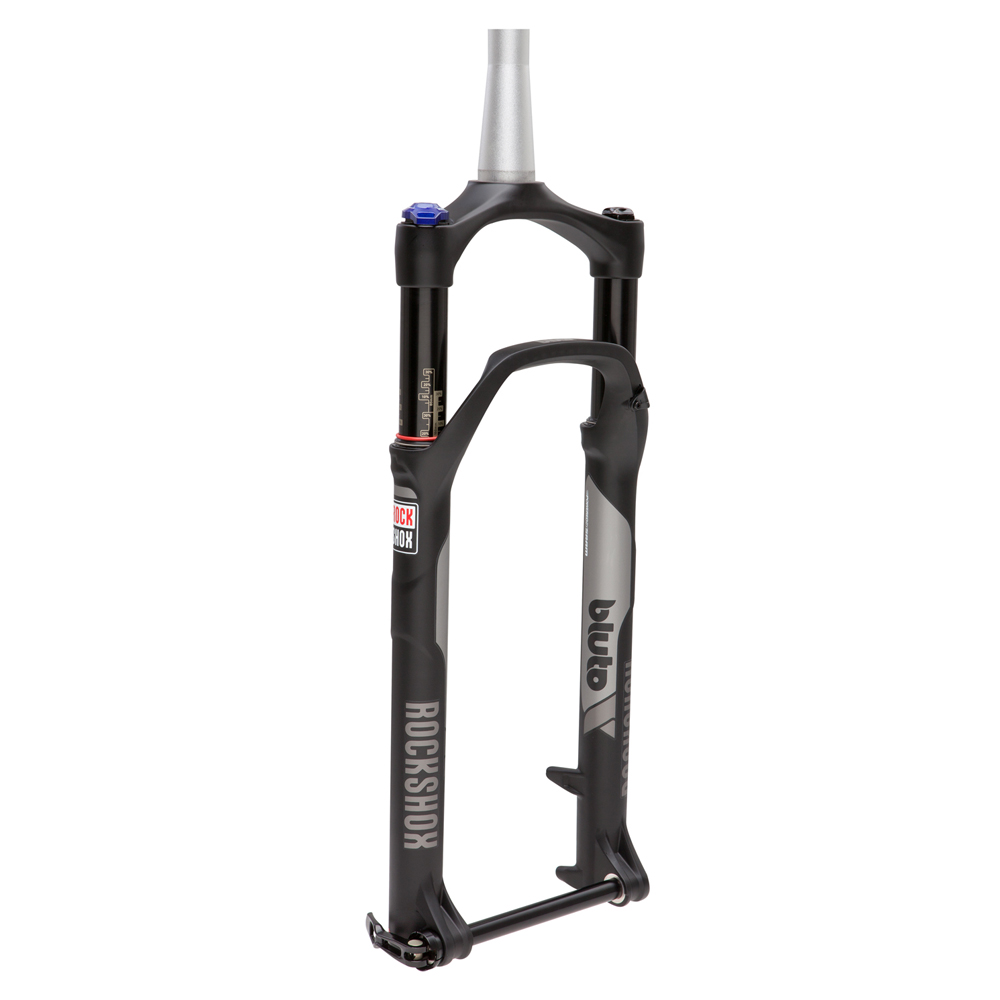In our fat bike survey earlier this year, 96% of fat bike riders reported running rigid forks on their bikes. Of course, the survey was conducted a couple months before the RockShox Bluto was available but still, not all fat bike riders are sold on the idea of suspension. After several weeks of summer fat bike riding and testing the RockShox Bluto, I can say this fork is definitely a worthwhile upgrade.
Specs
The RockShox Bluto features a Solo Air spring with 120mm of travel, rebound control, and a 15mm Maxle thru-axle. At 1796g, it weighs less than a Pike and just over 100 grams more than the stick-thin RS-1. To be fair, that’s about a pound and a half heavier than a rigid, steel fork, though no one ever accused fat bike riders of being weight weenies.
The Solo Air spring in the Bluto uses the same suspension technology as many other RockShox forks, including versions of the popular Reba, Pike, and Boxxer forks. According to SRAM, Solo Air tech makes the fork lightweight and also offers predictable rebound and control on the trail (more on that below). It’s also easy to set up in my experience and once it’s set, you can pretty much forget it.
SRAM says this fork can accommodate up to 200mm rotors, which should be more than enough for most riders. The RockShox Bluto features a clicky rebound adjustment knob on the top of the fork that is lockout remote compatible.
Performance
Since the Bluto is equipped with a handy rebound lockout, it’s been really easy to test to see (roughly) how the bike handles with and without suspension. I’ve said it before and I’ll say it again: there is a night and day difference between riding with suspension and without on summer trails. If you’ve ridden a hardtail with a rigid fork before, you know the ride is much more harsh than with a suspension fork, and you can’t ride nearly as fast since the front wheel skips across the terrain. Same thing with a fat bike. And no, squishy tires don’t make up for a lack of suspension.
Out on the trail, the Bluto felt instantly familiar with a similar progression to the Reba and Pike forks I’ve ridden recently. There’s no harsh bottom on big hits (well, as big as you can get on a fatbike) and the rebound provides a measured, controlled return.
One of the big hurdles to designing a fatbike fork is getting the thing rigid enough to resist torsional forces across such a wide stance. Honestly I don’t know a thing about the engineering behind the Bluto but I can tell you in practice that it’s as rigid and stiff as any mountain bike fork I’ve tested. There’s just no noticeable flex, which is a good thing no matter what kind of tires you’re rolling.
The RockShox Bluto is a high quality fork that instantly transforms your fat bike into an all-season rig you’ll want to ride everywhere you go. At $650 (and up, depending on options), this upgrade may not be cheap but it might just allow you to promote your fat bike from second string to one-and-only.























